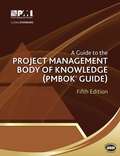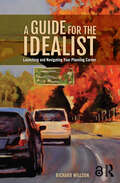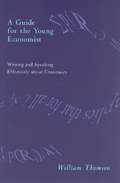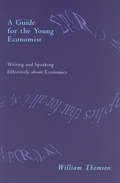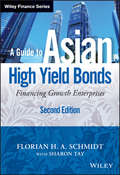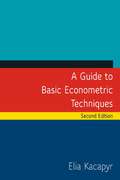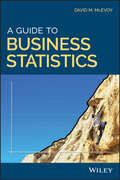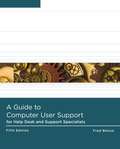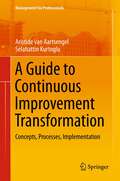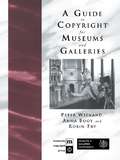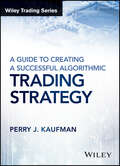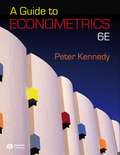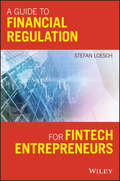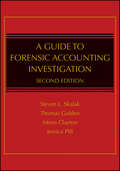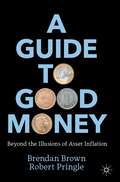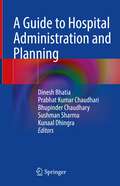- Table View
- List View
A Guarded Life: My story of the dark side of An Garda Síochána
by Majella MoynihanA GARDA, A FORCED ADOPTION, A FIGHT FOR JUSTICEIn 1984, Majella Moynihan was a fresh-faced young garda recruit when she gave birth to a baby boy. Charged with breaching An Garda Síochána's disciplinary rules - for having premarital sex with another guard, becoming pregnant, and having a child - she was pressured to give up her baby for adoption, or face dismissal. It forced her into a decision that would have devastating impacts on her life. Majella left the force in 1998 after many difficult years and, in 2019, following an RTÉ documentary on her case, she received an apology from the Garda Commissioner and Minister for Justice for the ordeal she endured as a young garda. Here, for the first time, she tells the full story. From an institutional childhood after the death of her mother when she was a baby, to realising her vocation of becoming a guard only to confront the reality of a police culture steeped in misogyny and prejudice, A Guarded Life is both a courageous personal account of hope and resilience in the darkest times, and a striking reflection on womanhood and autonomy in modern Ireland.
A Guarded Life: My story of the dark side of An Garda Síochána
by Majella MoynihanA GARDA, A FORCED ADOPTION, A FIGHT FOR JUSTICEIn 1984, Majella Moynihan was a fresh-faced young garda recruit when she gave birth to a baby boy. Charged with breaching An Garda Síochána's disciplinary rules - for having premarital sex with another guard, becoming pregnant, and having a child - she was pressured to give up her baby for adoption, or face dismissal. It forced her into a decision that would have devastating impacts on her life. Majella left the force in 1998 after many difficult years and, in 2019, following an RTÉ documentary on her case, she received an apology from the Garda Commissioner and Minister for Justice for the ordeal she endured as a young garda. Here, for the first time, she tells the full story. From an institutional childhood after the death of her mother when she was a baby, to realising her vocation of becoming a guard only to confront the reality of a police culture steeped in misogyny and prejudice, A Guarded Life is both a courageous personal account of hope and resilience in the darkest times, and a striking reflection on womanhood and autonomy in modern Ireland.
A Guide To The Project Management Body of Knowledge (Fifth Edition)
by Project Management Institute StaffA reflection on the collaboration and knowledge of working project managers that provides the fundamentals of project management as they apply to a wide range of projects. This internationally recognized standard provides the essential tools to practice project management and deliver organizational results.
A Guide for Substitute and Interim Teachers: Practical Tools for Success
by Barbara WashingtonIf you're a substitute or interim teacher, or thinking of becoming one, you won't want to miss the techniques and strategies in this user-friendly, easy-to-read book. Author Barbara Washington guides you through every step, including the application process, lesson planning, classroom management, and school safety. Each chapter offers practical examples and current best practices to support you on your way to success. The book also includes essential tools such as reproducible lesson plans, worksheets, graphic organizers, and more. Concise but complete, this is an ideal resource for substitute teacher professional development.
A Guide for the Idealist: Launching and Navigating Your Planning Career
by Richard WillsonA Guide for the Idealist is a must for young professionals seeking to put their idealism to work. Speaking to urban and regional planners and those in related fields, the book provides tools for the reader to make good choices, practice effectively, and find meaning in planning work. Built around concepts of idealism and realism, the book takes on the gap between the expectations and the constraints of practice. How to make an impact? How to decide when to compromise and when to fight for a core value? The book advises on career "launching" issues: doubt, decision-making, assessing types of work and work settings, and career planning. Then it explains principled adaptability as professional style. Subsequent chapters address early-practice issues: being right, avoiding wrong, navigating managers, organizations and teams, working with mentors, and understanding the career journey. Underpinning these dimensions is a call for planners to reflect on what they are doing as they are doing it. The advice provided is based on the experience of a planning professor who has also practiced planning throughout his career. The book includes personal anecdotes from the author and other planners about how they launched and managed their careers, and discussion/reflection questions for the reader to consider.
A Guide for the Idealist: Launching and Navigating Your Planning Career
by Richard WillsonA Guide for the Idealist is a must for young professionals seeking to put their idealism to work. Speaking to urban and regional planners and those in related fields, the book provides tools for the reader to make good choices, practice effectively, and find meaning in planning work. Built around concepts of idealism and realism, the book takes on the gap between the expectations and the constraints of practice. How to make an impact? How to decide when to compromise and when to fight for a core value? The book advises on career "launching" issues: doubt, decision-making, assessing types of work and work settings, and career planning. Then it explains principled adaptability as professional style. Subsequent chapters address early-practice issues: being right, avoiding wrong, navigating managers, organizations and teams, working with mentors, and understanding the career journey. Underpinning these dimensions is a call for planners to reflect on what they are doing as they are doing it. The advice provided is based on the experience of a planning professor who has also practiced planning throughout his career. The book includes personal anecdotes from the author and other planners about how they launched and managed their careers, and discussion/reflection questions for the reader to consider.
A Guide for the Young Economist: Writing and Speaking Effectively about Economics
by William ThomsonThis book is an invaluable guide for young economists working on their dissertations, preparing their first articles for submission to professional journals, getting ready for their first presentations at conferences and job seminars, or facing their first refereeing assignments. In clear, concise language--a model for what he advocates--William Thomson shows how to make written and oral presentations both inviting and efficient. Thomson covers the basics of clear exposition, including such nuts-and-bolts topics as titling papers, writing abstracts, presenting research results, and holding an audience's attention.
A Guide for the Young Economist: Writing and Speaking Effectively about Economics
by William ThomsonThis book is an invaluable guide for young economists working on their dissertations, preparing their first articles for submission to professional journals, getting ready for their first presentations at conferences and job seminars, or facing their first refereeing assignments. In clear, concise language--a model for what he advocates--William Thomson shows how to make written and oral presentations both inviting and efficient. Thomson covers the basics of clear exposition, including such nuts-and-bolts topics as titling papers, writing abstracts, presenting research results, and holding an audience's attention.
A Guide for the Young Economist: Writing and Speaking Effectively about Economics
by William ThomsonThis book is an invaluable guide for young economists working on their dissertations, preparing their first articles for submission to professional journals, getting ready for their first presentations at conferences and job seminars, or facing their first refereeing assignments. In clear, concise language—a model for what he advocates—William Thomson shows how to make written and oral presentations both inviting and efficient. Thomson covers the basics of clear exposition, including such nuts-and-bolts topics as titling papers, writing abstracts, presenting research results, and holding an audience's attention.
A Guide to Asian High Yield Bonds
by Sharon Tay Florian H. SchmidtAn up-to-date, comprehensive analysis of the high-yield bond market in AsiaBeginning with a general definition of high-yield bond products and where they reside within the corporate capital structure, this newly updated guide looks at the development of high-yield bonds in the United States and Europe before analysing this sector in Asia. It covers issuer countries and industries, ratings, and size distributions, and also covers the diversification of the high-yield issuer universe. It includes a thorough technical analysis of high-yield bond structures commonly employed in Asian transactions, including discussion of the respective covenants and security packages that vary widely across the region. Chapters and sections new to this edition cover such subjects as high-yield bond restructuring, the new high-yield "Dim Sum" market, and the high-yield placement market shutdown of 2008 - 2009. Finally, the book looks at the new characteristics of Asian economies for indicators on how the high-yield market will develop there are the near future.Offers an extremely detailed analysis of Asia's high-yield bond marketFeatures new and updated material, including new coverage of the key differences between Asian structures and United States structuresIdeal for CFOs of companies contemplating high-yield issuance, as well as investment bankers, bank credit analysts, portfolio managers, and institutional investors
A Guide to Assessing Needs: Essential Tools for Collecting Information, Making Decisions, and Achieving Development Results
by Ryan Watkins Maurya West Meiers Yusra Laila VisserThe earliest decisions that lead to development projects are among the most critical in determining long-term success. This phase of project development transforms exciting ideas into project proposals, setting the stage for a variety of actions that will eventually lead (if all goes well) to desirable results. From deciding to propose a sanitation project in South Asia to selecting approaches that strengthen school management in South America, these decisions are the starting place of development. This book is your guide to having assessing needs and then making essential decisions about what to do next. Needs assessments support this early phase of project development with proven approaches for gathering information and making justifiable decisions. Filled with practical strategies, tools, and guides, you will find that this book covers both large-scale formal needs assessments, as well as less-formal assessments that guide daily decisions. Included in the book is a blend of rigorous methods and realistic tools that can help you make informed and reasoned decisions. Use the tools featured in the book to conduct focus groups, develop surveys, prioritize needs, and lead group decision-making; developing a comprehensive, yet realistic, approach to identifying needs and selecting among alternative ways forward.
A Guide to Basic Econometric Techniques
by Elia KacapyrThis economical text is intended for use as a universal supplement to introductory econometrics courses. This edition contains two new chapters on economic forecasting. Extensive online supplements include teaching PowerPoints, solutions to test questions/problems, new instructor questions, and software programs with data to download.
A Guide to Business Mathematics
by Gerard O'ReganThe success of business today is dependent on the knowledge and expertise of its employees. The need for mathematics arises naturally in business such as in the work of the actuary in an insurance company, the financial mathematics required in the day-to-day work of the banker and the need to analyse data to extract useful information to enable the business to make the right decisions to be successful. A Guide to Business Mathematics provides a valuable self-study guide to business practitioners, business students and the general reader to enable them to gain an appropriate insight into the mathematics used in business. This book offers an accessible introduction to essential mathematics for the business field. A wide selection of topics is discussed with the mathematical material presented in a reader-friendly way. The business context motivates the presentation. The author uses modelling and applications to motivate the material, demonstrating how mathematics is used in the financial sector. In addition to the role of the actuary and the banker, the book covers operations research including game theory, trade discounts and the fundamentals of statistics and probability. The book is also a guide to using metrics to manage and measure performance, and business economics. Foundations on algebra, number theory, sequences and series, matrix theory and calculus are included as is a complete chapter on using software. Features • Discusses simple interest and its application to promissory notes/treasury bills. • Discusses compound interest with applications to present and future values. • Introduces the banking field including loans, annuities and the spot/forward FX market. • Discusses trade discounts and markups/markdowns. • Introduces the insurance field and the role of the actuary. • Introduces the fields of data analytics and operations research. • Discusses business metrics and problem solving. • Introduces matrices and their applications. • Discusses calculus and its applications. • Discusses basic financial statements such as balance sheet, profit and loss and cash account. • Reviews a selection of software to support business mathematics. This broad-ranging text gives the reader a flavour of the applications of mathematics to the business field and stimulates further study in the subject. As such, it will be of great benefit to business students, while also capturing the interest of the more casual reader. About the Author Dr. Gerard O'Regan is an Assistant Professor in Mathematics at the University of Central Asia in Kyrgyzstan. His research interests include software quality and software process improvement, mathematical approaches to software quality, and the history of computing. He is the author of several books in the Mathematics and Computing fields.
A Guide to Business Statistics
by David M. McEvoyAn accessible text that explains fundamental concepts in business statistics that are often obscured by formulae and mathematical notation A Guide to Business Statistics offers a practical approach to statistics that covers the fundamental concepts in business and economics. The book maintains the level of rigor of a more conventional textbook in business statistics but uses a more streamlined and intuitive approach. In short, A Guide to Business Statistics provides clarity to the typical statistics textbook cluttered with notation and formulae. The author—an expert in the field—offers concise and straightforward explanations to the core principles and techniques in business statistics. The concepts are introduced through examples, and the text is designed to be accessible to readers with a variety of backgrounds. To enhance learning, most of the mathematical formulae and notation appears in technical appendices at the end of each chapter. This important resource: • Offers a comprehensive guide to understanding business statistics targeting business and economics students and professionals • Introduces the concepts and techniques through concise and intuitive examples • Focuses on understanding by moving distracting formulae and mathematical notation to appendices • Offers intuition, insights, humor, and practical advice for students of business statistics • Features coverage of sampling techniques, descriptive statistics, probability, sampling distributions, confidence intervals, hypothesis tests, and regression Written for undergraduate business students, business and economics majors, teachers, and practitioners, A Guide to Business Statistics offers an accessible guide to the key concepts and fundamental principles in statistics.DAVID M. McEVOY, PhD, is an Associate Professor in the Economics Department at Appalachian State University in Boone NC. He has published over 20 peer-reviewed articles and is coeditor of two books. Dr. McEvoy is an award-winning educator who has taught undergraduate courses in business statistics for over 10 years. DAVID M. McEVOY, PhD, is an Associate Professor in the Economics Department at Appalachian State University in Boone NC. He has published over 20 peer-reviewed articles and is coeditor of two books. Dr. McEvoy is an award-winning educator who has taught undergraduate courses in business statistics for over 10 years.An accessible text that explains fundamental concepts in business statistics that are often obscured by formulae and mathematical notation A Guide to Business Statistics offers a practical approach to statistics that covers the fundamental concepts in business and economics. The book maintains the level of rigor of a more conventional textbook in business statistics but uses a more streamlined and intuitive approach. In short, A Guide to Business Statistics provides clarity to the typical statistics textbook cluttered with notation and formulae. The author—an expert in the field—offers concise and straightforward explanations to the core principles and techniques in business statistics. The concepts are introduced through examples, and the text is designed to be accessible
A Guide to College and University Budgeting: Foundations for Institutional Effectiveness
by Larry Goldstein Sandra SaboBudgeting is inherently political, too often short-term goals overrun long-term institutional interest. By presenting the many layers and budgeting models with a clear, comparative framework, author Larry Goldstein, demonstrates the organic link between planning and budgeting making it crystal clear that budgets and plans represent two sides of the same coin. Updated throughout to account for recent issues in budgeting, the fourth edition includes coverage of factors essential to the success of the budgeting process, including open communication with stakeholders, clear articulation of the budget to the strategic plan, budget implementation and monitoring process and the role of technology. This book also offers new academic administrators and faculty: - An introduction to budgeting ·Economic and political factors affecting the process - How to budget in difficult financial times - An insight on the role of the Board in applying various budgeting approaches
A Guide to Computer User Support for Help Desk and Support Specialists
by Fred BeisseCurrent or future user-support professionals discover the critical people skills and exceptional technical knowledge to provide outstanding support with Beisse's A GUIDE TO COMPUTER USER SUPPORT FOR HELP DESK AND SUPPORT SPECIALISTS, 5E. This useful guide focuses on the informational resources and technical tools needed most to function effectively in a support position. Readers learn to handle troubleshooting and problem solving, successfully communicate with clients, determine a client's specific needs, train end-users and even handle budgeting and other management priorities. This edition prepares readers to work with the latest developments, from Web and e-mail-based support to Windows 7 and cloud computing. Leading HelpSTAR and Microsoft Office Project Professional 2010 software accompanying the text further reinforce user-support knowledge and skills.
A Guide to Continuous Improvement Transformation: Concepts, Processes, Implementation (Management for Professionals)
by Selahattin Kurtoglu Aristide Van AartsengelThis book enables enterprise business leaders - from CEOs to supervisors - to understand what "Continuous Improvement" is, why it is probably the best answer to improved business performance in years, and how to put it to work in the unique environment of a specific organization. The book examines what is at the core of "Continuous Improvement" and delves deeper into the elements and constituents necessary to take an organization to the next level to ensure its continued, long-term existence. It provides guidance to enterprise management and to professionals engaged in the implementation of a "Continuous Improvement" initiative and enables them to structure and manage its implementation successfully. It also provides tools to quickly assess where an enterprise business stands in terms of strategic management and "Continuous Improvement".
A Guide to Copyright for Museums and Galleries
by Anna Booy Robin Fry Peter WienandWritten by a team of legal experts on copyright, this user-friendly, comprehensive guide is the essential reference tool for everyone in the world of museums and galleries whose work brings them into contact with copyright-related questions. It addresses relevant issues from a practical perspective and answers questions such as: What is copyright? How long does copyright last? How can you make money from copyright? What are the consequences of unauthorized use? A Guide to Copyright for Museums and Galleries shows that when properly handled, copyright can provide opportunities for museums and galleries to achieve their core objectives. This is an essential text for all museums and galleries.
A Guide to Creating A Successful Algorithmic Trading Strategy
by Perry J. KaufmanTurn insight into profit with guru guidance toward successful algorithmic trading A Guide to Creating a Successful Algorithmic Trading Strategy provides the latest strategies from an industry guru to show you how to build your own system from the ground up. If you're looking to develop a successful career in algorithmic trading, this book has you covered from idea to execution as you learn to develop a trader's insight and turn it into profitable strategy. You'll discover your trading personality and use it as a jumping-off point to create the ideal algo system that works the way you work, so you can achieve your goals faster. Coverage includes learning to recognize opportunities and identify a sound premise, and detailed discussion on seasonal patterns, interest rate-based trends, volatility, weekly and monthly patterns, the 3-day cycle, and much more--with an emphasis on trading as the best teacher. By actually making trades, you concentrate your attention on the market, absorb the effects on your money, and quickly resolve problems that impact profits. Algorithmic trading began as a "ridiculous" concept in the 1970s, then became an "unfair advantage" as it evolved into the lynchpin of a successful trading strategy. This book gives you the background you need to effectively reap the benefits of this important trading method. Navigate confusing markets Find the right trades and make them Build a successful algo trading system Turn insights into profitable strategies Algorithmic trading strategies are everywhere, but they're not all equally valuable. It's far too easy to fall for something that worked brilliantly in the past, but with little hope of working in the future. A Guide to Creating a Successful Algorithmic Trading Strategy shows you how to choose the best, leave the rest, and make more money from your trades.
A Guide to Econometrics (6th edition)
by Peter KennedyThis book designed to illuminate the logic of econometrics without formulas, providing intuition, skepticism, insights, humor, and practical advice. Designed for use in a range of courses, from undergraduate to graduate and PhD level.
A Guide to Financial Regulation for Fintech Entrepreneurs
by Stefan LoeschThe Fintech Entrepreneur’s Guide to Regulation and Regulatory Strategy Fintech has been growing dramatically over the last few years, and it is now an important sector in its own right. This means that Fintech companies, who could so far often rely on a comparatively lenient regulatory regime, will now have to give serious thoughts on compliance with applicable regulatory rules. Operating in a highly regulated environment is tedious, but not all bad—companies that can play the regulatory game well have a strategic advantage, especially with regard to time-to-market and scaling. Nothing spells missed opportunity like a competitor building market share with a copycat product whilst you are still waiting for your license! Written for professionals, this book helps anyone whose job has to do with formulating or executing a Fintech startup strategy or whose job touches financial services regulation, or anyone who simply wants an easy- to-read introduction to financial services and their regulation. Describes the purpose of and principle behind modern financial services regulation Explains how to include regulation into a startup’s strategic planning to optimize time-to-market and scaling Gives an overview of the entire financial services space, and which regulations apply where Gives detailed references to 20 key regulations in the EU regulatory system, including PSD, GDPR, CRD, AMLD, MiFID, UCITSD, AIFMD The first part introduces financial services regulation, its purpose, how it is created (especially in the EU and in the US), and it develops a framework for including regulations into the strategic planning of a company. It also gives a rundown of the current financial services space—players and products—and its key regulations. The second part describes a regulatory system in more detail. The system chosen is the EU because it is more consistent and unified than the US system where a lot of the regulation still is created at the state-level. However, as most financial regulation nowadays is determined at the global level, the principles found in EU regulation will be by and large also be found the US and other systems.
A Guide to Forensic Accounting Investigation
by Thomas W. Golden Steven L. Skalak Mona M. Clayton Jessica S. PillRecent catastrophic business failures have caused some to rethink the value of the audit, with many demanding that auditors take more responsibility for fraud detection. This book provides forensic accounting specialists?experts in uncovering fraud?with new coverage on the latest PCAOB Auditing Standards, the Foreign Corrupt Practices Act, options fraud, as well as fraud in China and its implications. Auditors are equipped with the necessary practical aids, case examples, and skills for identifying situations that call for extended fraud detection procedures.
A Guide to Good Money: Beyond the Illusions of Asset Inflation
by Brendan Brown Robert PringleModern money, having now become a key tool of government economic policy and a source of massive tax revenues, has strayed far from its original purpose. This is doubly regrettable, as the better money functions at an individual level in satisfying demand for quality, the better it is for economic prosperity and freedom.This book presents how modern money works both in the domestic economy and globally, outlining the essence of what makes good money. How does modern money differ from this ideal? By focusing on the dichotomy between globalization on the one hand and modern money’s base in the nation state (or group of states) on the other hand, the book demonstrates how US dominance in determining monetary conditions globally has grown since the mid-1990s. The book then discusses the adverse consequences, many of which are camouflaged, of present money doctrines now so widely and radically applied, presenting novel research on how the US by pursuing bad monetary policies has been the catalyst to deepening geo-political danger. The book continues by setting out how the illusions of asset inflation will fade, most likely in the midst of economic and financial tumult. The forces which bring about that income emanate in part from the long-run costs of growing mal-investment and monopolization which occur under monetary inflation especially in the context of a digitalization revolution. Apologists for the present monetary regime rest much of their case on these illusions and on the contention that the bill for the costs comes only in the long run. This book dismantles that case. A Guide to Good Money provides readers with the sight of a pathway to a promised land of real prosperity founded on sound money beyond those lost illusions, and will be of interest to academics, students, practitioners, and central bankers.
A Guide to Hospital Administration and Planning
by Prabhat Kumar Chaudhari Dinesh Bhatia Bhupinder Chaudhary Sushman Sharma Kunaal DhingraThis book is a compilation of work by experts from the different domains of the healthcare industry, ranging from hospital planning to quality management, clinical services to disaster management.Healthcare organizations, being diverse, sensitive, and intricate, warrant thorough and flawless planning. The structure should be not only operationally efficient but also safe for its occupants and visitors. It starts with a brief introduction of the healthcare sector at different levels. It also attempts to justify how the changing healthcare landscape paved the way for establishing a contemporary and ever-evolving specialty of Hospital planning and designing, which is dynamic and frequently requires continuous improvements and updates.Clinical and non-clinical departments have been separately classified in this book, and their respective standards and guidelines have been incorporated while describing the planning concepts. Critical areas of a hospital such as ICU, CCU have been detailed precisely as the operational requirements and level of different sophistication required. A chapter on security aspects and disaster management has also been thoroughly envisioned based on the current scenario at the global level. Issues and management of Hospital Acquired Infection are explained in different chapters based on its relevance and application in that particular area.
A Guide to IT Contracting: Checklists, Tools, and Techniques
by Michael R. Overly Matthew A. KarlynEven leading organizations with sophisticated IT infrastructures and teams of lawyers can find themselves unprepared to deal with the range of issues that can arise in IT contracting. Written by two seasoned attorneys, A Guide to IT Contracting: Checklists, Tools, and Techniques distills the most critical business and legal lessons learned through

